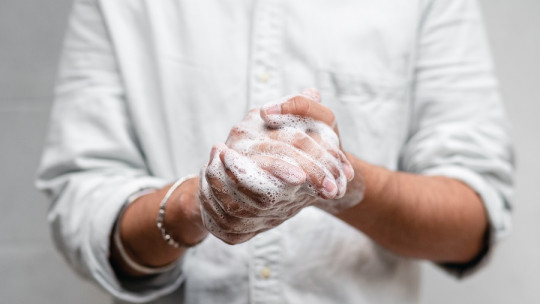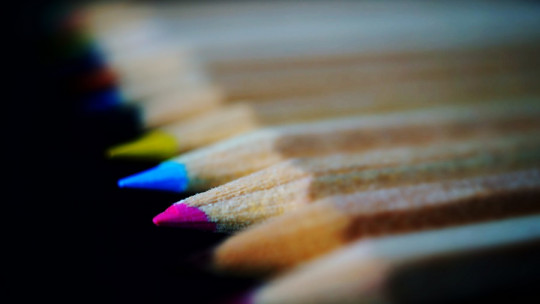
There are three main characteristics of obsessive-compulsive disorder, also known as OCD. These characteristics are compulsions, obsessions and anxiety caused by both.
Obsessions involve the appearance of repetitive thoughts or ideas that disturb the patients’ lives and make it difficult for them to concentrate beyond these. Compulsions are the consequence of obsessions and are used as a method to relieve the anxiety caused by them. That is, people do things in a specific way in response to obsessions.
Within Obsessive Compulsive Disorder (OCD), several main categories can be distinguished where different groups of symptoms are collected. In this article We will see the most common types of OCD.
What is obsessive-compulsive disorder?
OCD, or obsessive-compulsive disorder, is one of the 5 most common psychopathologies, and It is characterized by giving rise to a vicious cycle of obsessions and compulsions the two elements that are reflected in the name of this alteration.
Obsessions are intrusive thoughts that generate intense discomfort and make the person desperately search for a way to distract their attention from that mental content or, at least, relieve it by carrying out some action that reduces its intensity; and compulsion is precisely what he ends up doing to achieve it, an action based on a sequence of behaviors that over time is reinforced until we perceive it as the only solution to the obsessions.

In this way, obsession gives rise to compulsion and vice versa, since both induce us to give a lot of importance to the other, to predispose ourselves to experience them in an intertwined way. Besides, When OCD becomes consolidated, the obsessions usually increase in complexity and level of difficulty so that if the person makes a mistake when doing it, they feel that they need to start over.
What are the different types of OCD?
OCD can present in different ways, research suggests that people experience OCD symptoms in five main categories: cleaning and contamination, compulsive hoarding, symmetry and ordering, checking or verifying and forbidden thoughts and impulses.
Although there is no official classification, The different groups of symptoms are described in the recent edition of the DSM-5 (Diagnostic and Statistical Manual of Mental Disorders). Therefore, mental health professionals prefer to refer to the different subtypes of obsessive-compulsive disorders as symptomatic dimensions.
1. Pollution TOC
Obsessive Compulsive Pollution Disorder is a type of OCD that refers to obsession with cleanliness and personal hygiene.
People with this type of OCD have the fear that they or their environment is contaminated and the fear of contracting serious illnesses, that a person in their environment will die for some reason related to germs, and the fear that they themselves will enter in contact with bacteria, viruses and even body fluids.
Contamination OCD compulsions can be: avoiding touching objects or people, avoiding going to places, as these can threaten your health; use protection such as gloves, paper towels, and wash often (showering, washing your hands repeatedly or using hydroalcoholic gel every time you touch something that may be contaminated). And, being afraid of contracting serious illnesses, undergo health tests repeatedly such as testing for sexually transmitted infections/diseases (STIs/STDs).
2. Repetition OCD
People who suffer from this type of OCD They think that if they don’t do a certain number of things, bad things will happen to them or their loved ones. The obsession in repetition OCD is believing that if they do not say, for example, the word “heaven” 3 times, something catastrophic will happen near them. The compulsion, in this example, is the repetition of the word “heaven” so that nothing bad happens.
3. Compulsive hoarding OCD
People with hoarding disorder have great difficulty letting go of the possessions they have. They have a persistent perception that the things they own need to be put away. This leads them to stock many unnecessary items, even if they have no real value. People with this disorder also are prone to anxiety at the thought of getting rid of their possessions which often results in excessive clutter.
The obsession in obsessive-compulsive hoarding disorder is the fear of accidentally throwing away something important. And, for its part, the compulsion is to keep all the objects and not throw anything away so as not to lose that relevant object. For example, if a person with hoarding OCD buys the newspaper every day and puts it away, he or she will never want to throw away the newspapers for fear of throwing away one that is special for some reason.
We have to differentiate compulsive hoarding disorder from Diogenes syndrome. In the case of Diogenes syndrome, what is accumulated is garbage, while in hoarding disorder the person keeps the things that he considers necessary or valuable to him, they do not necessarily have to be disposable things.
4. Check or Verify OCD
People with obsessive-compulsive checking or verification disorder have the need to check anything that could endanger them in some way. For example, check that they have turned off the gas several times after cooking, for fear of an explosion. Or check that they have locked the door of the house when they leave, for fear that they will break in to steal, going back to make sure of this.
In this case, the obsession is the fear that something bad will happen due to carelessness: a robbery, or an explosion, for example. And, the compulsion is the constant checking that they have locked the house or the car, or the gas tap in the kitchen.
5. Order OCD
People with obsessive-compulsive order disorder need to have everything organized in a certain way because otherwise, again, they think something bad will happen. People who suffer from this OCD They often create guidelines and norms to generate that order. For example, the pens to the left of the notebook placed in a certain color order and parallel to the notebook.
The obsession of this type of OCD is the need to place certain things in a certain way (such as pens) for fear that if they are not placed in this way something bad will happen. Compulsion, on the other hand, is the need to order them to reduce that fear.
Sometimes obsessive-compulsive order disorder is accompanied by obsessive-compulsive contamination disorder, which we have talked about previously.
Consequences of suffering from OCD
Some people may think they suffer from some type of OCD because they are too tidy, or they are afraid of leaving the car unlocked or the house keys in the ignition, or they become obsessed with personal or home hygiene. Thus, these manifestations are natural, we all have certain small obsessions regarding specific topics, and they do not in themselves constitute suffering from any type of obsessive disorder.
However, we can say that a person suffers from OCD when their way of organizing, cleaning (or washing) involves an accomplishment of rituals and steps that you cannot stop doing and are not done in a sensible way.
Additionally, a person suffering from OCD may constantly try to avoid situations in which they are exposed or that cause fear. This means that on some occasions, people who suffer from obsessive-compulsive disorder have their daily lives interfered with because of it, and consequently, they develop other conditions such as depression or anxiety. OCD can also be a cause of social isolation or work problems.








